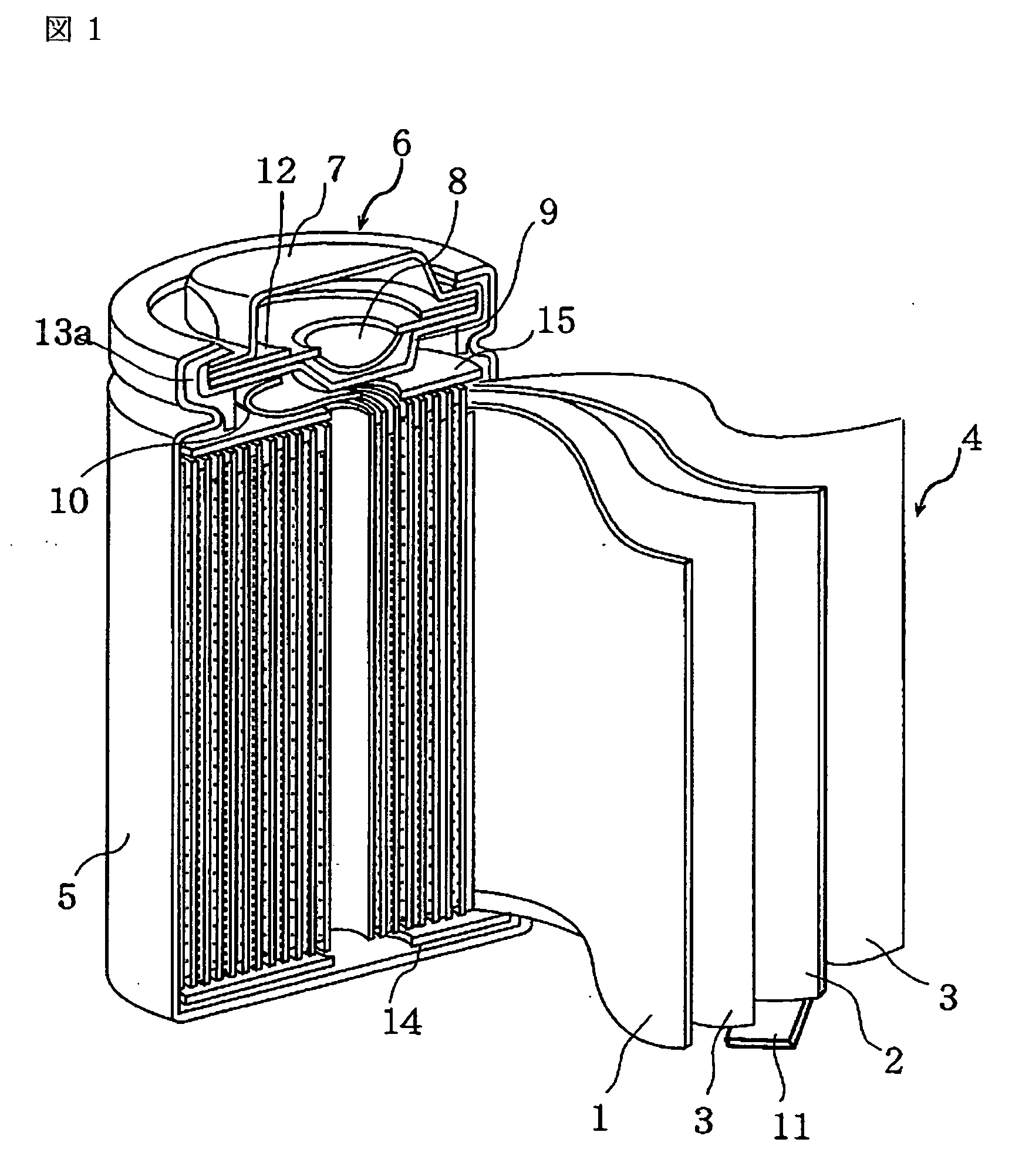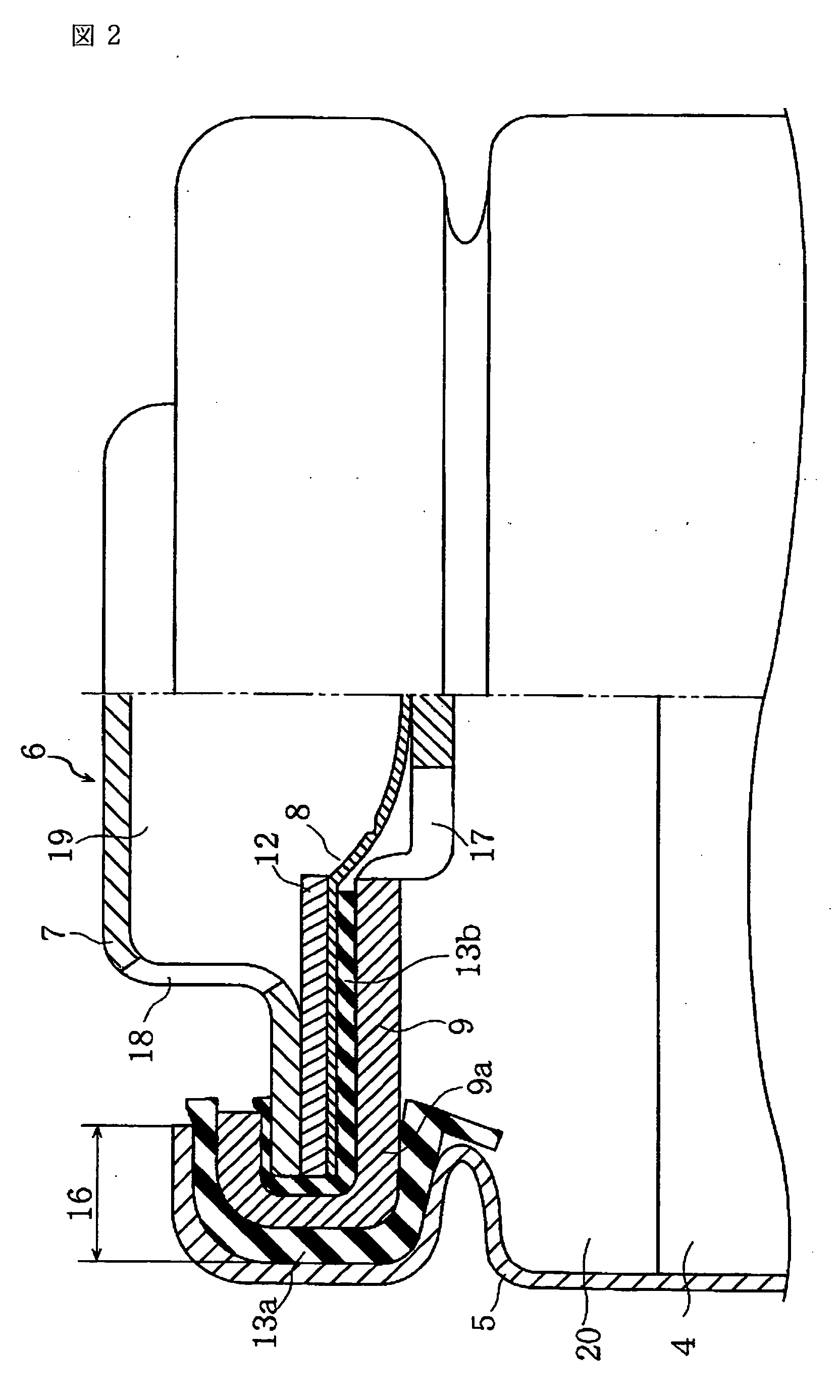Nonaqueous electrolyte secondary battery
- Summary
- Abstract
- Description
- Claims
- Application Information
AI Technical Summary
Benefits of technology
Problems solved by technology
Method used
Image
Examples
example 1
[0042] A non-aqueous electrolyte secondary cell according to Example 1 was prepared in the following manner.
[0043] Ninety two parts by mass of a positive electrode active material made of lithium cobalt oxide (LiCoO2), 5 parts by mass of a carbon-based conductivity agent made of acetylene black, 3 parts by mass of a binder made of polyvinylidene fluoride (PVdF), and N-methyl-2-pyrrolidone (NMP) were mixed, thus obtaining an active material slurry.
[0044] This active material slurry was uniformly applied on both surfaces of a positive electrode substrate made of an aluminum foil of 20 μm thick by doctor blade, and this resulting article was dried while passed through a heated dryer. By this drying step, an organic solvent required in the step of preparing the slurry was removed. Subsequently, this electrode plate was rolled with a roll press machine so that the thickness of the electrode plate was made to 0.17 mm, and thus, the positive electrode 1 was prepared.
[0045] Ninety five p...
example 2
[0049] A cell A2 of the present invention according to Example 2 was prepared in the same manner as Example 1 except that 0.5 part by mass of the cyclohexylbenzene was added.
example 3
[0050] A cell A3 of the present invention according to Example 3 was prepared in the same manner as Example 1 except that 5 parts by mass of the cyclohexylbenzene was added.
PUM
 Login to View More
Login to View More Abstract
Description
Claims
Application Information
 Login to View More
Login to View More - Generate Ideas
- Intellectual Property
- Life Sciences
- Materials
- Tech Scout
- Unparalleled Data Quality
- Higher Quality Content
- 60% Fewer Hallucinations
Browse by: Latest US Patents, China's latest patents, Technical Efficacy Thesaurus, Application Domain, Technology Topic, Popular Technical Reports.
© 2025 PatSnap. All rights reserved.Legal|Privacy policy|Modern Slavery Act Transparency Statement|Sitemap|About US| Contact US: help@patsnap.com



